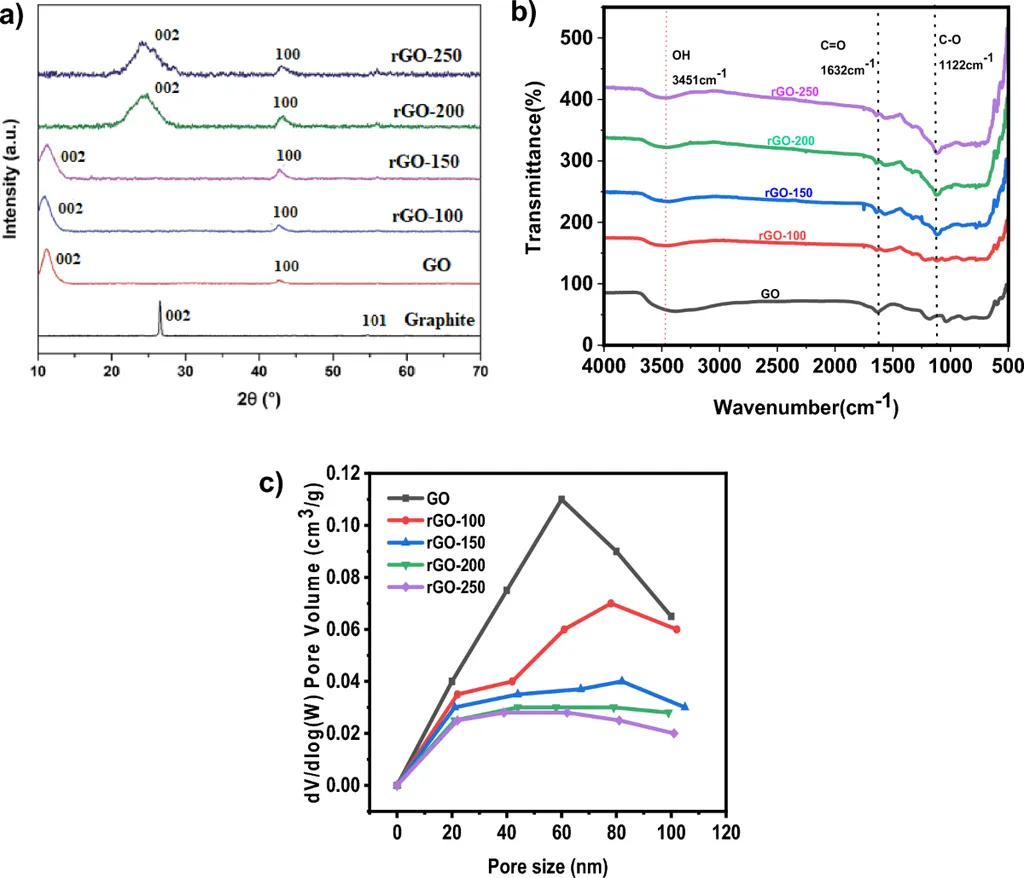In the quest for sustainable solutions to environmental challenges, a groundbreaking study has emerged from the Department of Physics at Manipal University Jaipur, led by Karishma Jain. The research, published in *Discover Materials* (which translates to *Materialer opdaget* in English), introduces a novel approach to dye degradation using mechanically synthesized sulfur-intercalated reduced graphene oxide (S@rGO) nanocomposites. This innovation could have significant implications for the energy sector and wastewater treatment, offering a promising avenue for addressing pollution and enhancing renewable energy technologies.
The study focuses on the enhanced photocatalytic performance of S@rGO nanocomposites against common dyes like methylene blue (MB) and methyl orange (MO). By intercalating sulfur into reduced graphene oxide, the researchers achieved increased interlayer spacing and crystallite size, which are crucial for efficient photocatalysis. “The key to our success lies in the precise control of sulfur insertion at oxygen-containing sites in rGO,” explains Karishma Jain. “This not only improves the material’s structural properties but also enhances its photocatalytic efficiency.”
The research employed various analytical techniques to validate the nanocomposites’ properties. X-ray diffraction (XRD) confirmed the sulfur intercalation and the resulting increase in interlayer spacing and crystallite size. Raman and Fourier-transform infrared (FTIR) spectroscopy further validated the successful insertion of sulfur. Scanning electron microscopy (SEM) revealed a homogeneous, sheet-like morphology, while energy-dispersive X-ray (EDX) analysis confirmed the appropriate elemental composition.
One of the most compelling aspects of this study is the tunable band gap of the S@rGO nanocomposites, ranging from 2.04 to 3.00 eV. This tunability is crucial for efficient photocatalysis, as it allows the material to absorb a broader spectrum of light, enhancing its effectiveness in degrading dyes. “The tunable band gap is a game-changer,” Jain notes. “It enables us to tailor the material’s properties to specific applications, making it highly versatile for various environmental and optoelectronic uses.”
Kinetic studies were conducted to understand the degradation process better. The researchers observed that the degradation of dyes followed pseudo-zeroth, first, and second-order models, with rapid degradation occurring under alkaline conditions. Notably, increased sulfur content enhanced the photocatalytic efficiency and reduced long-range crystallinity, highlighting the importance of sulfur intercalation in optimizing the material’s performance.
The study also demonstrated the excellent stability and recyclability of the S@rGO nanocomposites. Reusability tests confirmed that the material maintains its photocatalytic performance even after multiple cycles, making it a cost-effective and sustainable solution for dye degradation.
The implications of this research extend beyond environmental applications. The enhanced photocatalytic performance of S@rGO nanocomposites could revolutionize the energy sector by improving the efficiency of solar cells and other optoelectronic devices. “Our findings open up new possibilities for developing advanced materials that can harness solar energy more effectively,” Jain explains. “This could lead to significant advancements in renewable energy technologies, contributing to a more sustainable future.”
As the world grapples with the challenges of pollution and the need for clean energy, innovations like the S@rGO nanocomposites offer a beacon of hope. The research led by Karishma Jain and her team at Manipal University Jaipur represents a significant step forward in the field of materials science, with the potential to shape future developments in environmental remediation and renewable energy. With the study published in *Discover Materials*, the scientific community now has a new tool in its arsenal to tackle some of the most pressing issues of our time.

